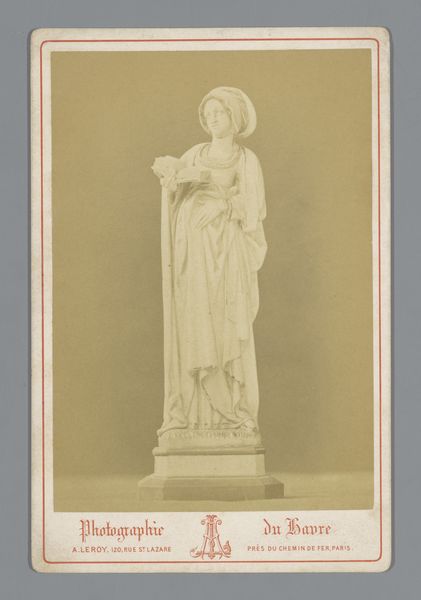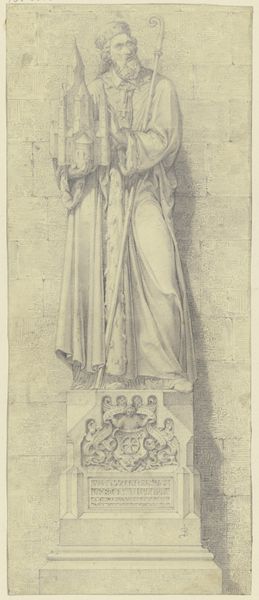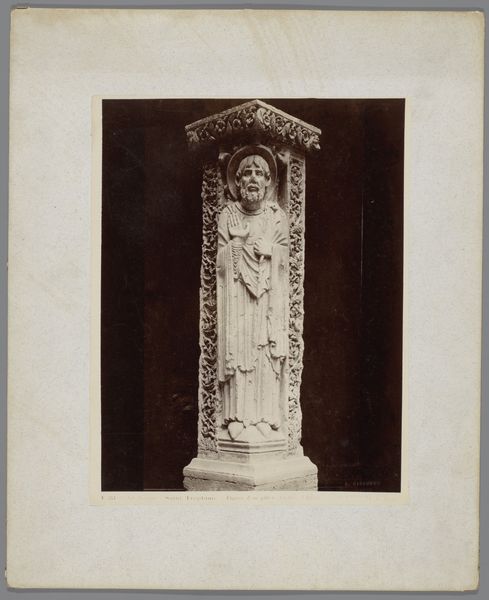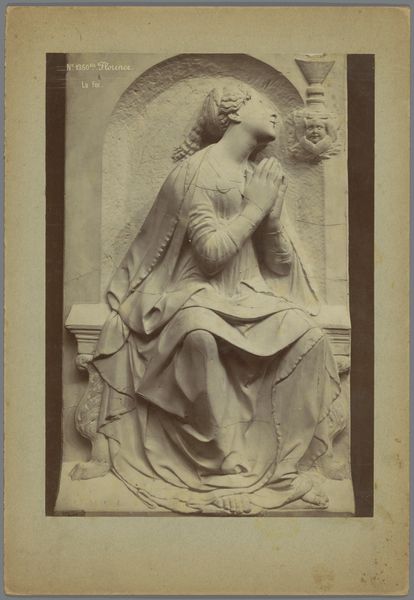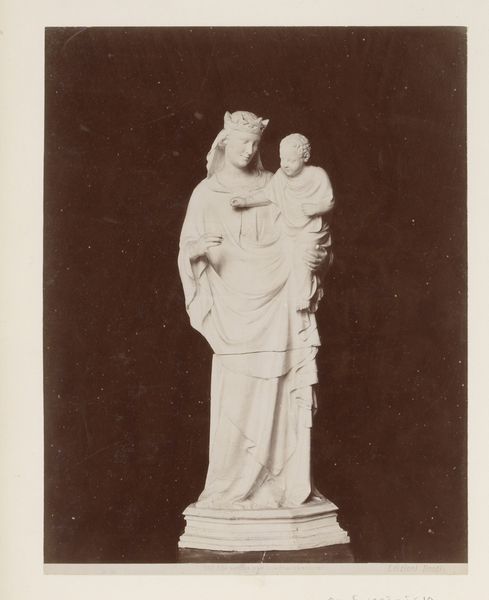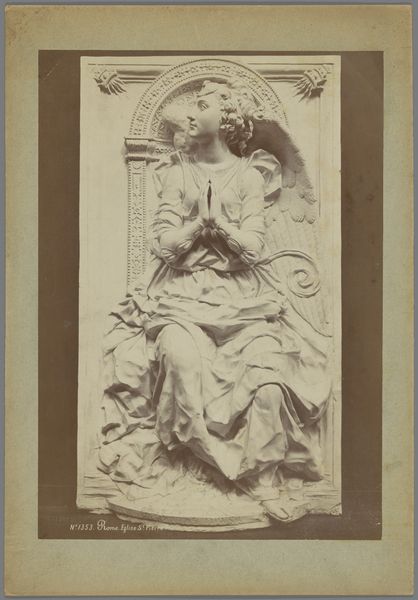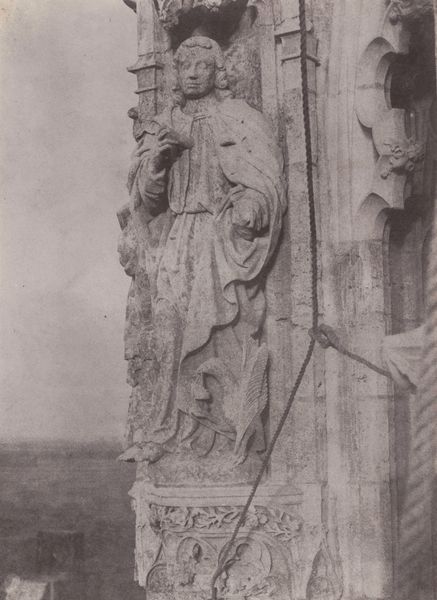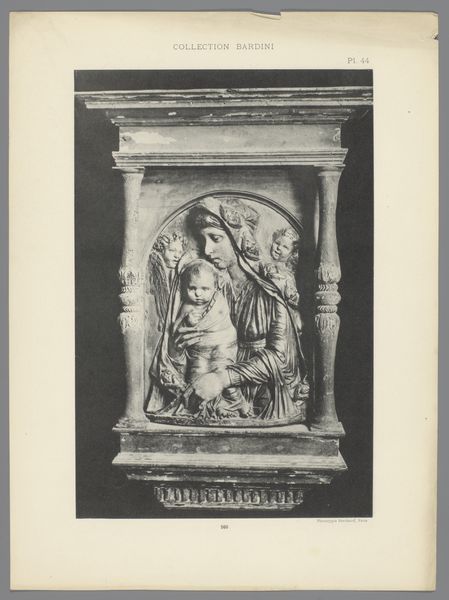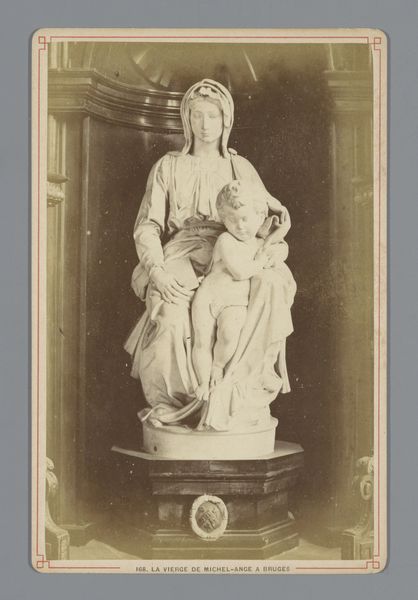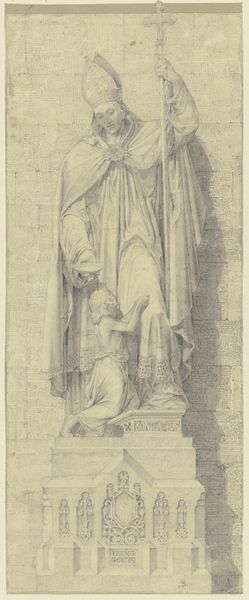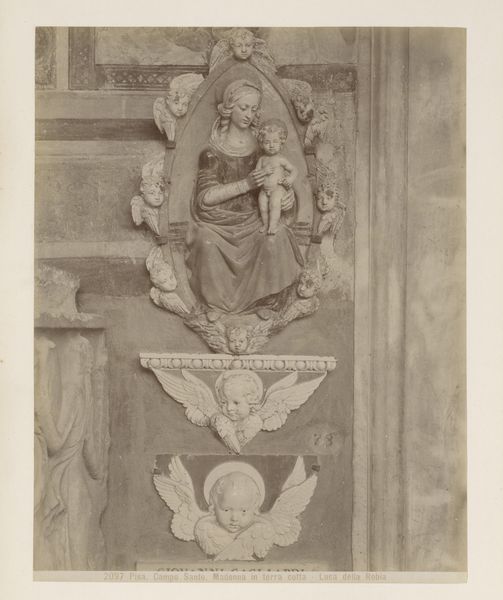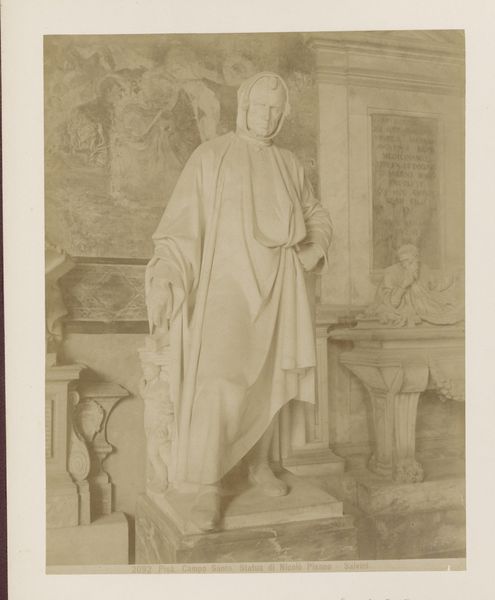
Sculptuur van een vrouw, vermoedelijk een heilige op de kathedraal Saint-André te Bordeaux c. 1875 - 1900
0:00
0:00
Dimensions: height 342 mm, width 215 mm
Copyright: Rijks Museum: Open Domain
Editor: This photograph, taken between 1875 and 1900 by Médéric Mieusement, depicts a sculpture of a woman, thought to be a saint, from the Saint-André Cathedral in Bordeaux. It looks like a gelatin silver print of a marble sculpture. The sculpture has a serene quality to it, but I wonder how a formalist art expert would interpret its composition. What stands out to you? Curator: Observe the interplay of vertical and horizontal lines. The rigid architectural frame—itself bisected by the pointed arch—encases the flowing lines of the draped figure. This contrast immediately directs the eye. Notice, too, how the sculptor uses light and shadow to define the folds of her garment, creating a rhythm that moves down the form. The tight space emphasises her stillness. Editor: It’s like the frame almost traps her. But isn’t there also something about the way her hands are clasped, almost creating a focal point? Curator: Precisely. The convergence of lines, both literal and implied, draws us to her hands. Consider the formal implications: the texture of the beads offers a contrast to the smooth marble of her face and robes. That deliberate textural juxtaposition adds to the work’s complexity, as does her headdress: observe the sharp contrast between the curves of her face and the stark geometry that frames it. This element locks in her expression of piety. Editor: So it's not just about what she represents but also how those formal choices affect us, the viewers? Curator: Exactly. The photograph allows us to appreciate how line, form, and texture create the expressive effect. The sculptor and photographer’s understanding and application of form contribute to its compelling nature, giving the figure not just form but meaning. Editor: It's amazing how much can be gleaned from purely visual elements.
Comments
No comments
Be the first to comment and join the conversation on the ultimate creative platform.
